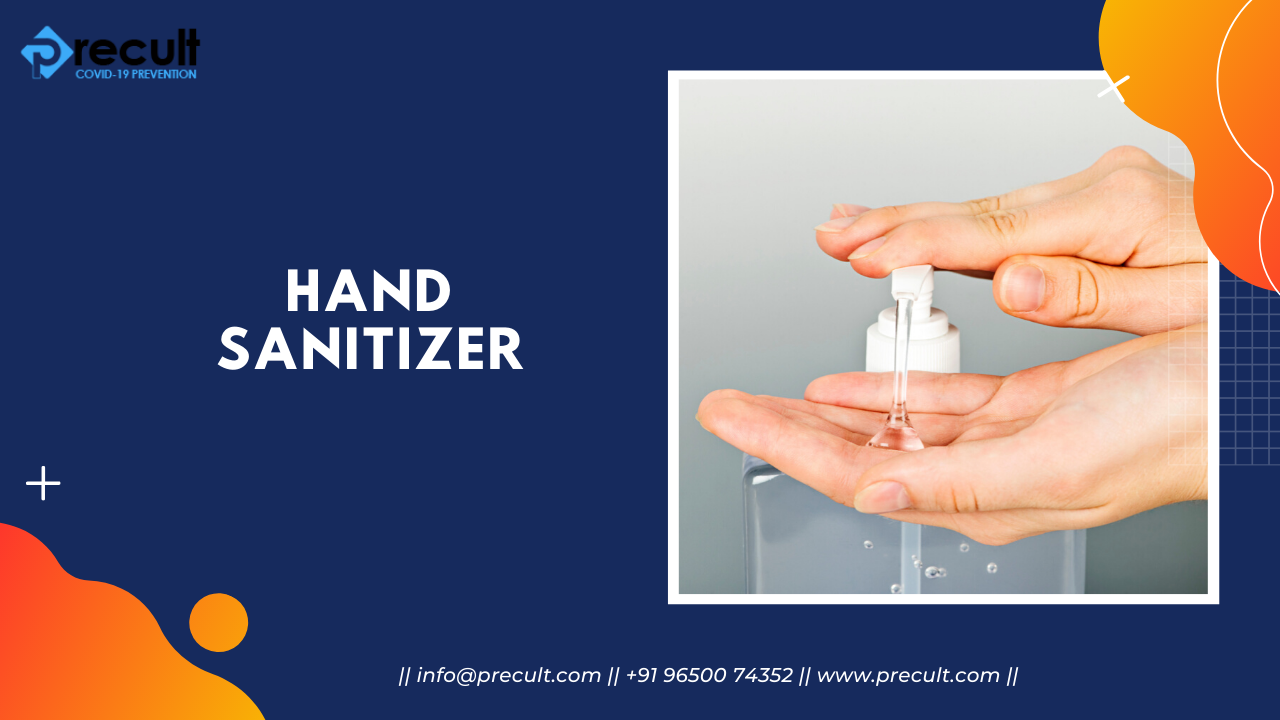
INTRODUCTION
Hand sanitizer is in a liquid, gel or foam form generally used to kill microbial agents on the hands. Hand sanitizers are recommended when regular washing of hands is required and soap and water is unavailable. Frequent washing of hands with soap and water causes scaling or fissures to develop on skin.
There are two types of sanitizer preparations. One is Alcohol-based and another one is Alcohol-free.
- Alcohol based versions of sanitizer typically contains some combination of isopropyl alcohol, ethanol (ethyl alcohol), or n-propanol, with containing 60% to 95% alcohol the most effective.
- Alcohol free versions of sanitizer are generally based on disinfectants or on antimicrobial agents.
WHO recommends alcohol-based sanitizer, hand rubs, disinfectant should be used instead of alcohol free sanitizer to fight against COVID 19 based on the following factors:
- Alcohol based sanitizer has advantages of fast acting and broad-spectrum of microbicide activity with a minimal risk of generating resistance to antimicrobial agents;
- Suitability for use in resource-limited or remote areas with lack of accessibility to sinks or other facilities for hand hygiene can use hand sanitizer, hand rubs or hand disinfectant;
- It has capacity to promote improved hand hygiene by making the process faster and more convenient;
- It also provides economic benefit by reducing annual costs for hand hygiene and also the raw material required is cheap and easily available.
EFFECTIVENESS OF HAND SANITIZER
Effectiveness of hand sanitizer depends on various factors such as type of sanitizer, duration of application of sanitizer, time taken to kill any bacteria or virus, quantity of sanitizer applied, type of bacteria or virus and many more.
Hand sanitizer that contains a minimum of 60% alcohol or contains a "persistent antiseptic" should be used. Alcohol rubs kill many various sorts of bacteria, including antibiotic resistant bacteria and TB bacteria. They also kill many sorts of viruses, including the flu virus, the cold virus, coronaviruses, and HIV.
In the times of spread of COVID 19 coronavirus use of hand sanitizers have increased rapidly as top most precaution for COVID 19 coronavirus is hand hygiene which involves cleaning of hand regularly. Due to non-availability of water and soap everywhere it is highly recommended that we should use hand sanitizer.
FEATURES:
- Effective in preventing growth of microorganisms.
- Safe to use. Hand sanitizer doesn't contain harsh ammonia, alkalis or abrasives which cause damage and irritation to skin.
- Extremely economical.
- Reduces the use of water and soap
- Very convenient to carry everywhere
Benefits:
- Hand sanitizers are easy to use, convenient, portable.
- Several studies show that the risk of spreading gastrointestinal (stomach) and respiratory infection is decreased through using of hand sanitizers.
- Alcohol-based hand sanitizers can quickly reduce the amount of microbes on hands.
- Hand sanitizers do not promote antimicrobial resistance
- DO’S AND DON’TS OF USING HAND SANITIZER
- Apply the product to the palm of one hand and rub the product all over the surfaces of your hands.
- Rub the sanitizer for at least 30 seconds
- Let the applied sanitizer air dry and do not wipe off the excess sanitizer.
- Excessively soiled hands or greasy hands should be cleaned with water and soap first and then sanitizer should be applied.
- Sanitizer do not work properly on soiled, oily or greasy hands.
- Commercial hand sanitizers may have a higher content of alcohol which makes it a greater fire hazard
PROCESS FOR PREPARATION OF SANITIZER
- The alcohol/Ethanol for the formula to be used is poured into the large bottle or tank up to the prescribed mark.
- Hydrogen peroxide is added using the measuring cylinder into the tank/large bottle.
- Glycerol is also added using a measuring cylinder/measuring jug. As glycerol is very thick and sticks to the wall of the measuring cylinder, it should be rinsed with some sterile distilled or cold boiled water and then emptied into the bottle/tank.
- The bottle/tank is then topped up to the required mark with sterile distilled or cold boiled water.
- The lid or the screw cap is placed on the tank/bottle as soon as possible after adding all the substances, in order to prevent evaporation
- The solution is mixed by gently shaking or by using a paddle where ever appropriate.
- Immediately divide up the solution into its final containers and place the bottles in isolation for at least 72 hours before use. This allows time for any spores present in the alcohol or the new/re-used bottles to be destroyed and become safe to use again.
Certifications
- CE Certified
- ISO Certified
- COA certified
In these times of need and scarcity we Precult ITES Private Limited are here 24*7 to help and serve our people. We help to provide all types of hand sanitizer to serve the clients.









